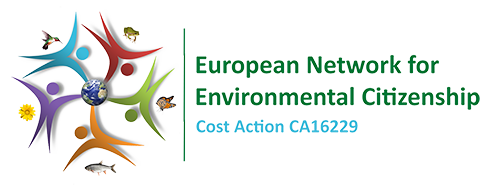Search Results Resources
You have searched in Resources with the following criteria: << Go Back
The search returned 33 results.
Andreas Ch. Hadjichambis
- From
- 18
- To
- 25+
How Students’ Values are Intertwined with Decisions in a Socio-scientific Issue
English
Cyprus
Abstract The present study incorporated a scaffolding decision making procedure on an authentic environmental socio-scientific issue and investigated how students’ decisions are intertwined with their values. Computer-based activities provided necessary information and allowed for the consideration of multiple aspects of the issue, the study of the effects of every possible solution and the formulation and balancing of criteria. The optimization strategy for decision making was adopted. Data collection relied on 51 sixth grade students (11-12 years old). Open-ended written tests were given to students before and after the learning intervention with two tasks: application of the optimization strategy and a meta-reflection question explaining their decision. Children incorporated several criteria in the decision making process, however, what guided their decisions were the criteria which were given the greater weight. These criteria were connected with substantive arguments and were based on decisive values. Three value-driven patterns of decision makers were revealed: strong anthropocentric, weak anthropocentric and ecocentric. The ability of assigning weight in conflicting criteria is a cornerstone for the emersion of how values are interrelated with decisions. Values arise when preferences are in conflict and decisions are made by weighting alternatives in comparison to our preferences. In conclusion, students have to learn to develop solutions that represent a compromise between economic, ecological, and socioeconomic dimensions, which include establishing a value hierarchy. The ability to weight decision criteria and to disclose underlying value considerations may be an elaborate way to work with multifaceted socio-scientific issues.
Benito Cao
- From
- 15
- To
- over 25
Environment and Citizenship
English
Australia
- Knowledge
- Skills
- Competencies
- Values
- Attitudes
- Behaviours
- Economic Aspects of Environmental Citizenship
- Social Aspects of Environmental Citizenship
- Political Aspects of Environmental
- Citizenship
- Environmental Citizenship General
- Collective actions
- Actions in Private sphere
- Actions in Public sphere
- Actions in Local scale
- Actions in National scale
- Actions in Global scale
- Addressing structural causes of environmental problems
- Achieving critical & active engagement and civic participation
- Practising environmental rights & duties
- Promoting inter- & intra-generational justice
- Developing healthy relationship with nature
- Achieving sustainability
- Sustain Environmental and Social Change
- Civic Participation
- Evaluation and Reflection
This book is the first introduction to the field of environmental citizenship. The book provides an accessible, stimulating and multidimensional overview of the many ways in which concern for the environment – driven primarily by the preoccupation with sustainability – is reshaping our understanding of citizenship.
Benito Cao
- From
- 15
- To
- over 25
Consuming Environmental Citizenship, or The Production of Neoliberal Green Citizens.
English
Australia
- Knowledge
- Values
- Attitudes
- Behaviours
- Economic Aspects of Environmental Citizenship
- Social Aspects of Environmental Citizenship
- Political Aspects of Environmental
- Citizenship
- Environmental Citizenship General
- Individual actions
- Collective actions
- Actions in Private sphere
- Actions in Local scale
- Actions in National scale
- Actions in Global scale
- Practising environmental rights & duties
- Developing healthy relationship with nature
- Evaluation and Reflection
This book chapter explores the neoliberalisation of environmental citizenship, with particular a particular focus on the production of neoliberal green subjects/citizens. The chapter examines three pedagogical instruments used to promote environmental citizenship: government campaigns, ecological footprint calculators, and media texts, in particular children's animation.

